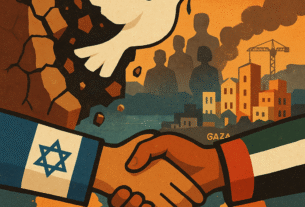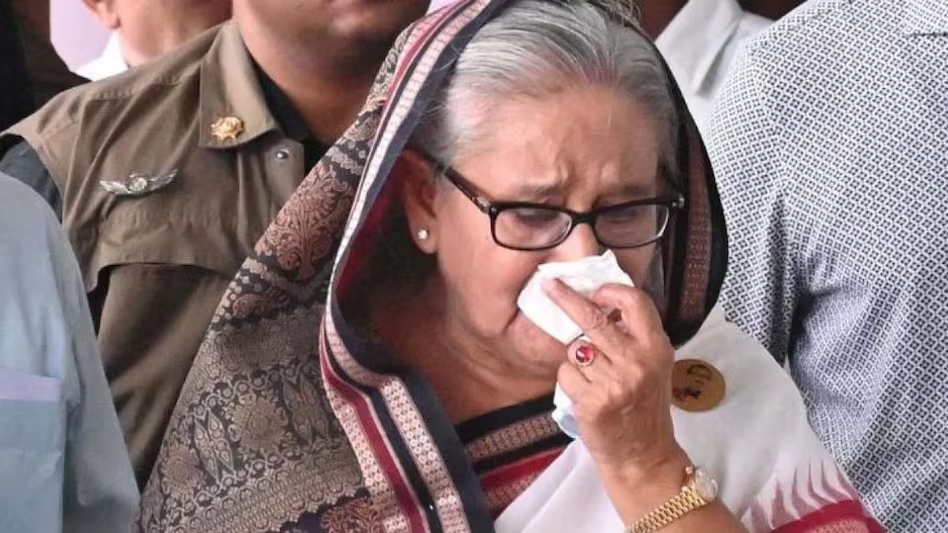Anuk Arudpragasam’s ‘The Story of a Brief Marriage’ is a remarkable feat of sensitivity and imagination, a meditation on the fundamental aspects of human existence—eating, sleeping, washing, touching, speaking—that give us direction and purpose even amidst collapsing worlds. Spanning a single day and night, this unflinching debut confronts marriage and war, life and death, endowing its subjects with the utmost dignity, however fleeting.
Context:
Two and a half decades deep into a devastating civil war, Sri Lanka’s Tamil minority finds itself inexorably driven towards the coast by the advancing army. Among them is Dinesh, his world shrunk to a makeshift camp where time ticks by in shells falling around him like clockwork. Estranged from family, home, language, and body, he exists in a state of numb acceptance, untouched by the violence surrounding him, until one morning an old man approaches with an unexpected proposal: that Dinesh marry his daughter, Ganga.
In this world, marriage is a bid for safety, akin to the beached fishing boat under which Dinesh seeks shelter during bombings. As a couple, they are less likely to be conscripted by the rebels or abused in the event of an army victory. Thrust into this scenario of peculiar intimacy and dependence, Dinesh and Ganga grapple with their circumstances, tentatively trying to awaken to themselves and each other before the war once again closes in around them.
Also read: Modi’s resource allocation claim
The Story of a Brief Marriage Spoiler Alert
The opening scene of Arudpragasam’s debut novel, ‘The Story of a Brief Marriage,’ in which a six-year-old child with a shrapnel-shredded arm is brought to an open-air operating theatre, feels distressingly current. The young man carrying the listless child finds a strange solace in assessing the child’s prospects: “Soon the doctor would arrive and the operation would be done, and in no time at all the arm would be as nicely healed as the already amputated thigh… According to the boy’s sister, [the] injury came from a land mine explosion four months before, the same accident that killed their parents also.”
It brings to mind the images of stunned, bloodied children now emerging from Syria and other war zones. The novel implicitly and explicitly raises crucial questions about the aesthetic and ethical stakes involved in witnessing the suffering of others.
Arudpragasam employs placid, even poetic prose, with results that range from brilliantly unsettling to questionably indulgent. The novel is set around seven years ago, in the Tamil-majority north of Sri Lanka, during the harrowing final months of the island’s vicious civil war. Reminiscent of José Saramago, “The Story of a Brief Marriage” transforms a fraught political-historical moment into a fable-like narrative: a boy and girl meet and marry. These are humble characters known only by their first names, Dinesh and Ganga. They live in an unnamed village and a makeshift camp in lush woodlands thick with tropical heat, artillery smoke, and the constant threat of sudden death.
In the face of his own inevitable demise, Ganga’s father decides to do what he can for his daughter and proposes that Dinesh marry her. Given their collective dire circumstances, Dinesh is taken aback by this offer. But in keeping with the muted emotions and fatalism that mark every character in the book, he accepts, as does Ganga, though neither seems particularly enthusiastic. The surrounding carnage proves too much for a newlywed couple to overcome, given how much each has already lost:
“But if they couldn’t talk about their pasts, what could they say to each other at all, given that there was no future for them to speak of either?”
They strive to build a shared life, and their efforts produce the novel’s most moving moments. Disregarding the constant threat of death, injury, forced conscription, starvation, and rape, Ganga and Dinesh are shy, uncertain, and tentative—just as any other sudden young couple would be. He suggests a walk, which they take in silence; she prepares a small meal of rice and dal that he savours, not just for the sustenance but because she made it for him.
Arudprakasam details each gesture and thought, down to the “shape and taste of the soft grains” that Dinesh relishes, “cleaving the rice into separate sections in his mouth.” Only at the end of the chapter does Arudprakasam reveal that all this elaborate deference enacts the young couple’s own unspoken desire to delay the inevitable: “Dinesh licked the last grains of rice off his fingertips… aware that it was time now for them to spend their first night together.”
Also read: India’s new shoe sizing system ‘Bha’
The Story of a Brief Marriage Analysis
‘The Story of a Brief Marriage’ is a poignant and deeply moving novel that explores the complexities of human relationships against the backdrop of the Sri Lankan civil war. Set in the final days of the conflict in 2009, the story follows Dinesh, a young man displaced by the war, as he navigates the harsh realities of life in a refugee camp and finds unexpected solace and connection in the form of Ganga, a young woman also struggling to survive in the midst of chaos and destruction.
Arudpragasam’s writing is devilishly detailed, and hauntingly beautiful, drawing the reader into the stark and brutal world of the refugee camp with vivid and evocative prose. Through Dinesh’s eyes, we witness the everyday horrors of war—the constant threat of violence, the scarcity of food and resources, and the overwhelming sense of loss and despair that hangs over everything. And yet, amidst this bleakness, there is also a glimmer of hope, as Dinesh and Ganga forge a bond that offers them a brief respite from the brutality of their circumstances.
One of the novel’s most striking aspects is its exploration of the impact of war on individual lives. Arudpragasam deftly portrays the psychological toll of the conflict, showing how it can strip away not only physical comforts but also the very essence of a person’s humanity. Dinesh, in particular, is a deeply sympathetic character, his inner turmoil and struggle for survival mirroring the larger tragedy unfolding around him.
In addition to its powerful storytelling, the book offers a nuanced commentary on the LTTE issue in Sri Lanka and the civil war that ravaged the country for decades. Arudpragasam does not shy away from the complexities of the conflict, instead presenting a nuanced and multifaceted portrayal that challenges readers to confront the realities of war and its aftermath.
Inevitably, at the end of it all, Dinesh and Ganga’s bleak expectations are realised and the reader is pushed towards an untimely, unforgivable climax. Shells rain down once more, and amid the infernal “smoke and sulphur,” Dinesh frantically searches for Ganga. Finally, he finds her: “Her left eye was half-open and the right corner of her parted lips was kissing the dirt.”
The overly evocative phrasing of this image haunts me even now, long after I put the book down. The story starts with graphic violence and ends with it too. Violence is generously littered throughout its pages. But the core essence is not about violence, it’s about human dignity, connection, and the crying need for empathy. It is a meditation on the nature of love, loss, and resilience. Despite the brevity of Dinesh and Ganga’s time together, love is a testament to the strength of their spirit in the face of adversity.
The Story of a Brief Marriage – a delicate dance between death and life.
Also read: Doordarshan changes its iconic logo




